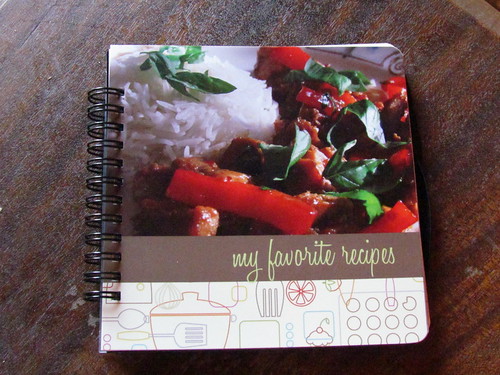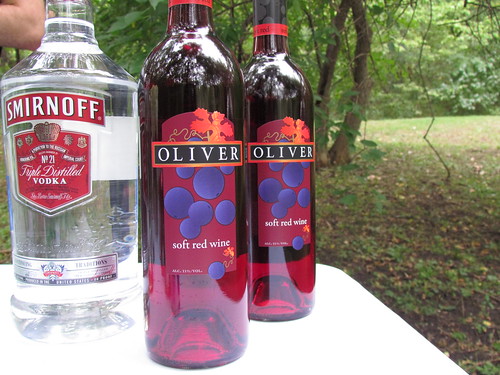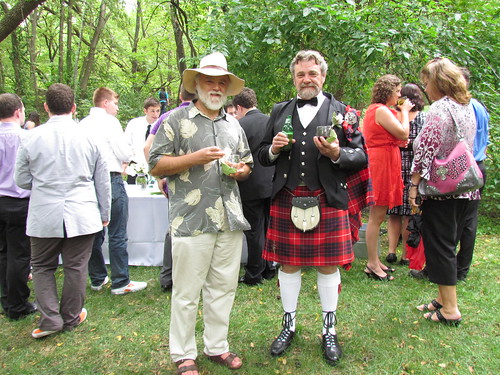***********
Things are pretty busy now, but in a good way. I am keeping up with the food blogging, but hope to get back to my usual blathering about my sad little life here in the soul-sucking suburban prairie.
In the meantime, let us discuss the concept of ownership as it applies to recipes. The topic came up last week on my meal-planning post when Emily of Pantalones del Fuego pointed out that one of the recipes in my book had originated with her, and not the person to whom I had attributed it. It wasn't a big deal, as Emily and I are friends. And I apologized. Sort of.
The thing is, I attribute recipes to the person from whom I actually received it.
It is Celeste's Baked Ziti....it is Caroline's Chicken Divan. Even though I know both of the recipes were not created, per se, by them.
My understanding of recipe copyright and how I go about personally sharing recipes here is based upon the following tenants:
1) you can put a recipe on your site if you change the preparation instructions and credit the original source. You can't just print word for word.
2) once you change 3 ingredients, the recipe technically becomes "yours"
It turns out, I was a bit too strict. Per ResearchCopyright.com, an ingredient list alone is not copyrightable, although instructions are:
If you take the list of ingredients (say for egg and olive salad) and write up, in your own words, how to make it, then, by law, you have an original recipe.Oh, and all of those Pioneer Woman Haters will now have to find new reasons for their venom since it is obvious she is not breaking any laws. You can now sleep at night, Ree. You're welcome.
..... your list of ingredients cannot be copyrighted. The directions and other information can. Practically speaking, this allows every food writer in the world to publish traditional recipes, home cooking favorites and simple recipes.
I have always felt that I should refer to the cookbook author from whom I have gotten recipes. At a minimum, it is the polite thing to do, no? However, this clarification makes me feel better that I am not breaking any sort of law. Furthermore, I have two cookbooks in particular where I HATE their method of writing instructions For example, my recipes for Pad Prik Kai (Thai Chicken in Red Chili Sauce) and Kai Kratium (Thai Garlic Pepper Chicken) came from these cookbooks. The original instructions were simply awful, but the end product is awesome and a part of my regular rotation for meals. I got tired of digging through confusing steps and re-wrote their recipes for simplicity, for my own use. And then I shared them with you, Gentle Reader
Because I love you like that.
Today, I am sharing a pumpkin erisheri recipe that was inspired by Maya Kaimal's Savoring the Spice Coast of India: Fresh Flavors from Kerala. I've changed the instructions and fiddled with a few ingredients. Namely, I substituted pinto beans for the mung beans - I just didn't feel all the work involved resulted in much difference in taste or texture. And Manoj agreed.
Anyway! This is essentially a pumpkin curry and I love that this is a recipe from my husband's state of Kerala in India. This is a dish that his own mother would have cooked and it makes me happy that my own kids will have cozy memories of this dish from their own childhood. My mother-in-law died when Manoj and I had only been dating for a few months. I never got to meet her and it still makes me sad that my children will never know her.
Pumpkin Curry (Pumpkin Erisheri)
Ingredients:
15 oz can of pinto beans, rinsed and drained
4 cups of fresh pumpkin cut into 3/4 inch cubes
1/4 cup grated unsweeetened coconut
1/4 tsp turmeric
1/4 tsp cayenne
1 and 1/4 tsp salt
2 tbs vegetable oil
1 tsp mustard seeds
2 dried red chilies
Coconut Paste:
3/4 cup of grated, unsweetened coconut
1 tbs chopped garlic
1 tsp cumin
1/2 tsp cayenne
1/4 tsp turmeric
Preparation:
1. For the coconut paste, place ingredients in a blender or food processor. Add 1/2 cup water or more and blend to the consistency of thick pesto. Set aside.
2. In a wide deep pan place the pumpkin, turmeric, cayenne, salt, and 1 and 1/2 cups water. Bring to a boil, reduce the heat, and simmer, covered for 10 minutes.
3.Add the pinto beans. Continue cooking until the pumpkin is tender and a fork easily slides through (10-15 minutes.)
4. Add the coconut paste and stir to combine. Bring to a boil, then remove from the heat.
5. In a frying pan, heat the vegetable oil over medium-high heat. Add the mustard seeds and cover. When the mustard seeds begin to pop, toss in the dried red chilies and fry for a few seconds. Add the remaining 1/4 cup of coconut and stir constantly over medium-high heat until the coconut turns cinnamon brown and no white remains. Stir this into the cooked pumpkin and beans and heat the mixture until warmed through (add more water if it begins to dry out.)
6. Remove from the heat and check the salt. The curry should appear as chunks of pumpkin with a thick sauce. Serve with white rice.
Note: This recipe can also be made with sweet potato and butternut squash. I like to mix the two because with the sweet potato, otherwise it is a little too sweet.










































